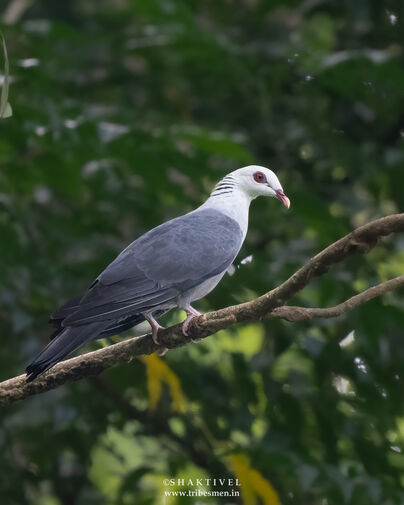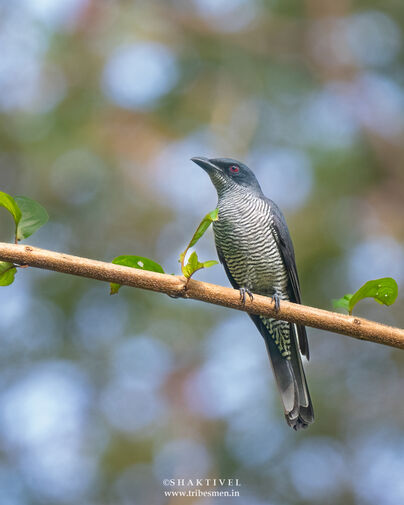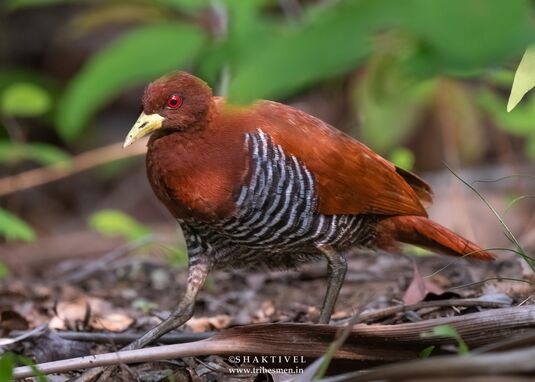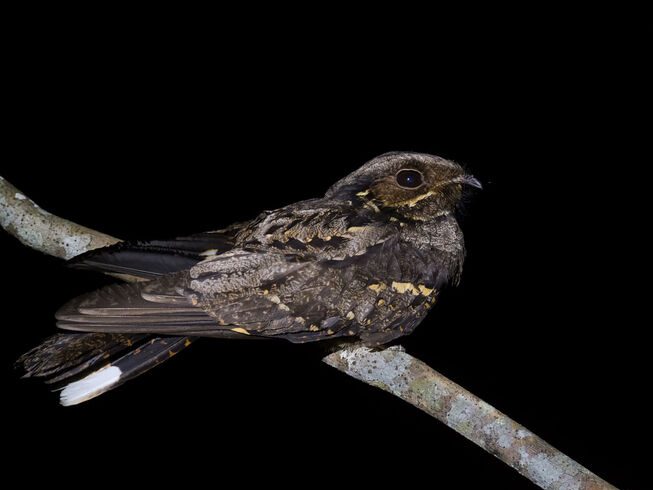Endemic Birds of Andaman Islands
The Andaman & Nicobar Islands, in the Bay of Bengal, represent the highest peaks of an underwater mountain range. Rising from the sea floor 38 million years ago, it is an extension of Myanmar’s Arakan range and the Sumatran Barisan range. Its geographical isolation for over 10,000 years allowed evolution to take its course. Now these islands play host to an absolute treasure trove of endemic wildlife.
Below is the list of endemic birds of Andaman:
 Andaman Wood Pigeon (Columba palumboides), a large pigeon endemic to the Andaman & Nicobar Islands, Reaches 35-40 cm. Its silvery-gray small head fades to pale gray underparts, with darker wings and back. reddish skin and yellow eyes with distinct pink feet add to its unique look.
Andaman Wood Pigeon (Columba palumboides), a large pigeon endemic to the Andaman & Nicobar Islands, Reaches 35-40 cm. Its silvery-gray small head fades to pale gray underparts, with darker wings and back. reddish skin and yellow eyes with distinct pink feet add to its unique look.
It inhabits dense, broadleaved forests, feeding on fruits and seeds. Its deep, hooting calls resonate through the canopy. Threatened by habitat loss, this pigeon’s presence is vital to the island & ecosystem.
 Andaman Bulbul (Pycnonotus fuscoflavens) is a passerine endemic to the Andaman archipelago.
Andaman Bulbul (Pycnonotus fuscoflavens) is a passerine endemic to the Andaman archipelago.
Characterized by its olive-yellow plumage, darker head, light blue eyes, and subtle vocalizations, it is about 14 to 17 cm in size. Its calls, often described as metallic five notes, resonate through its preferred habitats: evergreen and deciduous forests, and
secondary growth.Dietary habits center on frugivory, supplemented by insect consumption.
 Andaman Serpent Eagle (Spilornis elgini), Endemic to the Andaman Islands, captivates with its striking appearance.
Andaman Serpent Eagle (Spilornis elgini), Endemic to the Andaman Islands, captivates with its striking appearance.
Measuring around 55-74 cm, it sports dark brown plumage with white spots till the neck, sex alike
These eagles prefer forested habitats, where they hunt reptiles, small mammals, and birds. Diet primarily consists of snakes, hence its name. They are often seen soaring above the canopy or perched on tall trees.
 Andaman Woodpecker (Dryocopus hodgei), a large woodpecker, approximately 40-45 cm in length. Its plumage is characterized by a predominantly black coloration, punctuated by a prominent red crest.
Andaman Woodpecker (Dryocopus hodgei), a large woodpecker, approximately 40-45 cm in length. Its plumage is characterized by a predominantly black coloration, punctuated by a prominent red crest.
This species occupies dense forested habitats, where it functions as an arboreal insectivore. Foraging primarily on beetle larvae and other insects. It exhibits a preference for old-growth forests with an abundance of dead or decaying wood, reflecting its ecological reliance on such habitats where its loud, resonant drumming patterns and sharp calls can be heard.
 White-headed Starling (Sturnia erythropygia), a species endemic to the Andaman & Nicobar Islands,
White-headed Starling (Sturnia erythropygia), a species endemic to the Andaman & Nicobar Islands,
A passerine, measuring approximately 20-22 cm in length. Its distinctive plumage features a striking white head and body contrasting markedly with its dark grey to black wing. Additionally, it exhibits a reddish-orange bill and legs with blue eyes and a shade of blue in lower mandible. This species occupies a diverse range of habitats, including forested areas, woodlands, and cultivated landscapes. It demonstrates an omnivorous diet, foraging on fruits, insects, and nectar.
 Andaman Cuckooshrike (Coracina dobsoni), endemic to the Andaman Islands and is extremely range-restricted to certain forest patches of the main islands only.
Andaman Cuckooshrike (Coracina dobsoni), endemic to the Andaman Islands and is extremely range-restricted to certain forest patches of the main islands only.
A medium-sized bird, about 25-27 cm long. It displays predominantly dark grey to black plumage, with a crucial identifying feature: barred underparts and red eyes. Its calls consist of harsh, grating notes and occasional soft whistles.
This species inhabits dense forests and woodlands, foraging for mostly insects and berries primarily within the canopy. Its movements are often slow and deliberate.
 Andaman Shama (Copsychus albiventris), a captivating songbird found exclusively in the Andaman Islands, measures roughly 20-22 cm. Its plumage is a striking contrast of glossy black on the upperparts and a clean white on the underparts, accentuated by a distinctive reddish- orange vent.
Andaman Shama (Copsychus albiventris), a captivating songbird found exclusively in the Andaman Islands, measures roughly 20-22 cm. Its plumage is a striking contrast of glossy black on the upperparts and a clean white on the underparts, accentuated by a distinctive reddish- orange vent.
This bird inhabits dense forests and woodlands, preferring areas with thick undergrowth. It feeds on insects, fruits, and berries. Its complex, melodious song, a blend of whistles and trills, resonates through the forest.
 Andaman Coucal (Centropus andamanensis), with its warm brown plumage and chestnut wings, is a striking island resident. Reaching 60-70 cm, it inhabits forests and gardens. Sexes are visually similar, with the female being pale in color.
Andaman Coucal (Centropus andamanensis), with its warm brown plumage and chestnut wings, is a striking island resident. Reaching 60-70 cm, it inhabits forests and gardens. Sexes are visually similar, with the female being pale in color.
This terrestrial bird forages for insects, reptiles, and fruits. Distinctively, it produces deep, resonant “hoop” notes, along with chuckling and grating calls, echoing through its secluded habitat.
These unique vocalizations are a signature sound of the Andaman
wilderness, adding to the island’s rich biodiversity.
 Andaman Teal (Anas albogularis), a vulnerable species endemic to the Andaman Islands, is a small duck, 40-45cm, with a distinctive white throat and face against dark brown plumage.
Andaman Teal (Anas albogularis), a vulnerable species endemic to the Andaman Islands, is a small duck, 40-45cm, with a distinctive white throat and face against dark brown plumage.
It inhabits freshwater wetlands, mangroves, and coastal lagoons,
feeding on aquatic plants and invertebrates. Habitat loss from human encroachment of wetlands significantly threatens its population. Conservation efforts are crucial to protect its remaining habitat and ensure the survival of this species.
 Andaman Cuckoo-Dove (Macropygia rufipennis), characterized by its medium body size with longer tail, ranging from 38-41 cm.
Andaman Cuckoo-Dove (Macropygia rufipennis), characterized by its medium body size with longer tail, ranging from 38-41 cm.
This pigeon displays a warm, rufous-brown plumage,
complemented by darker and a distinct barred pattern on its body starting from the neck to the underparts. Its primary habitat consists of dense, broadleaf evergreen environments.
Primarily a frugivore, it sustains itself on a diet of fruits and berries, foraging primarily within the upper canopy. Its vocalizations, characterized by soft two notes—first a short upper note accompanied by a long downward note cooing—contribute to the sonic
landscape of its habitat.
 Andaman Drongo (Dicrurus andamanensis), is a medium-sized passerine, approximately 28-30 cm in length. Its glossy black plumage and deeply forked tail with a slight outward curve are readily identifiable morphological features. This species primarily occupies forested and woodland habitats, where it functions as an aerial insectivore, exhibiting remarkable agility in capturing insects during flight.
Andaman Drongo (Dicrurus andamanensis), is a medium-sized passerine, approximately 28-30 cm in length. Its glossy black plumage and deeply forked tail with a slight outward curve are readily identifiable morphological features. This species primarily occupies forested and woodland habitats, where it functions as an aerial insectivore, exhibiting remarkable agility in capturing insects during flight.
Perched on prominent branches, it maintains vigilance over its territory.
Its vocalizations are characterized by a diverse repertoire of loud
often metallic calls and a variety of short, harsh notes. These calls serve territorial and communicative functions within its habitat.
 Andaman Green-Pigeon (Treron chloropterus) A large, dull-green pigeon with a thick pale bill and a gray forehead. The dark olive-green and maroon wings have contrasting yellow lines below the shoulders, and the undertail is dull yellow with green patches, blending perfectly with its forest habitat.
Andaman Green-Pigeon (Treron chloropterus) A large, dull-green pigeon with a thick pale bill and a gray forehead. The dark olive-green and maroon wings have contrasting yellow lines below the shoulders, and the undertail is dull yellow with green patches, blending perfectly with its forest habitat.
These pigeons are primarily frugivores. often seen in large numbers feeding on fruits and berries found in the dense tropical forests. They inhabit both.
primary and secondary forests, often seen in the canopy. Their soft, cooing calls resonate through the trees.
Habitat loss and hunting pose a threat to this beautiful and unique pigeon, making its conservation crucial.
 Andaman Crake (Rallina canningi), a small, elusive bird endemic to the Andaman Islands, measures around 20-23 cm. Its plumage is primarily dark reddish-brown, white, and black bands.
Andaman Crake (Rallina canningi), a small, elusive bird endemic to the Andaman Islands, measures around 20-23 cm. Its plumage is primarily dark reddish-brown, white, and black bands.
underparts with apple-green beak and leg, blending seamlessly into its preferred habitat of
dense forests and bushy shrub areas.
This secretive crake forages on the forest floor, consuming insects, seeds, and small invertebrates. Often heard but rarely seen, its calls, a series of soft, clicking notes, echo through the undergrowth.
This shy bird remains a
rare and precious sight.
 Andaman Treepie (Dendrocitta bayleyi) is a distinct corvid species exclusively found in the Andaman Islands. This medium-sized bird is characterized by its slender build and relatively long tail. Its plumage features a combination of dark grey to black on the face, wings, and tail, with reddish-brown underparts and back. Notably, it has a small white patch on its wings.
Andaman Treepie (Dendrocitta bayleyi) is a distinct corvid species exclusively found in the Andaman Islands. This medium-sized bird is characterized by its slender build and relatively long tail. Its plumage features a combination of dark grey to black on the face, wings, and tail, with reddish-brown underparts and back. Notably, it has a small white patch on its wings.
It inhabits well-wooded lowland forests often in mixed hunting flocks. This omnivorous species feeds on insects, fruits, seeds, and occasionally small vertebrates. Its calls encompass a variety of metallic sounds, harsh screeches, dry trills, and soft whistles.
 Andaman Flowerpecker (Dicaeum virescens) is the only flowerpecker of the Andaman Islands.
Andaman Flowerpecker (Dicaeum virescens) is the only flowerpecker of the Andaman Islands.
Measuring roughly 8-9 cm, its olive-green upperparts and paler underparts have a small hint of yellow patch separating it from the Plain Flowerpecker. Its slender, curved bill is perfect for extracting nectar. Sex alike.
These birds are primarily nectarivorous, supplementing their diet with insects, spiders, and small fruits, particularly figs. They thrive in subtropical and tropical moist lowland forests, navigating the canopy with agility, and are also seen in gardens and parks.
 Narcondam Hornbill (Rhyticeros narcondami), the smallest Rhyticeros hornbill, and it has the smallest global range among hornbills. endemic to the tiny (6.82 km2) island of Narcondam, in the Andaman Archipelago. Resides in the fairly open mixed forest, which covers most of the island, from sea level to the peak.
Narcondam Hornbill (Rhyticeros narcondami), the smallest Rhyticeros hornbill, and it has the smallest global range among hornbills. endemic to the tiny (6.82 km2) island of Narcondam, in the Andaman Archipelago. Resides in the fairly open mixed forest, which covers most of the island, from sea level to the peak.
It uses mature, undisturbed forests with large trees for nesting and roosting. The species nests in holes on the trunk or broken branches of large trees, and the female is sealed into a nest cavity for the duration of egg-laying and chick-rearing.
With a population of only 300-600 mature individuals currently occupying the restricted Narcondam Island, visiting the island is off-limits for Indian & foreign tourists and is not part of our birding tours.

The Andaman Islands are also home to five endemic nocturnal birds of andaman, click on the below button to learn more about the endemic owls & nightjars of the islands.
